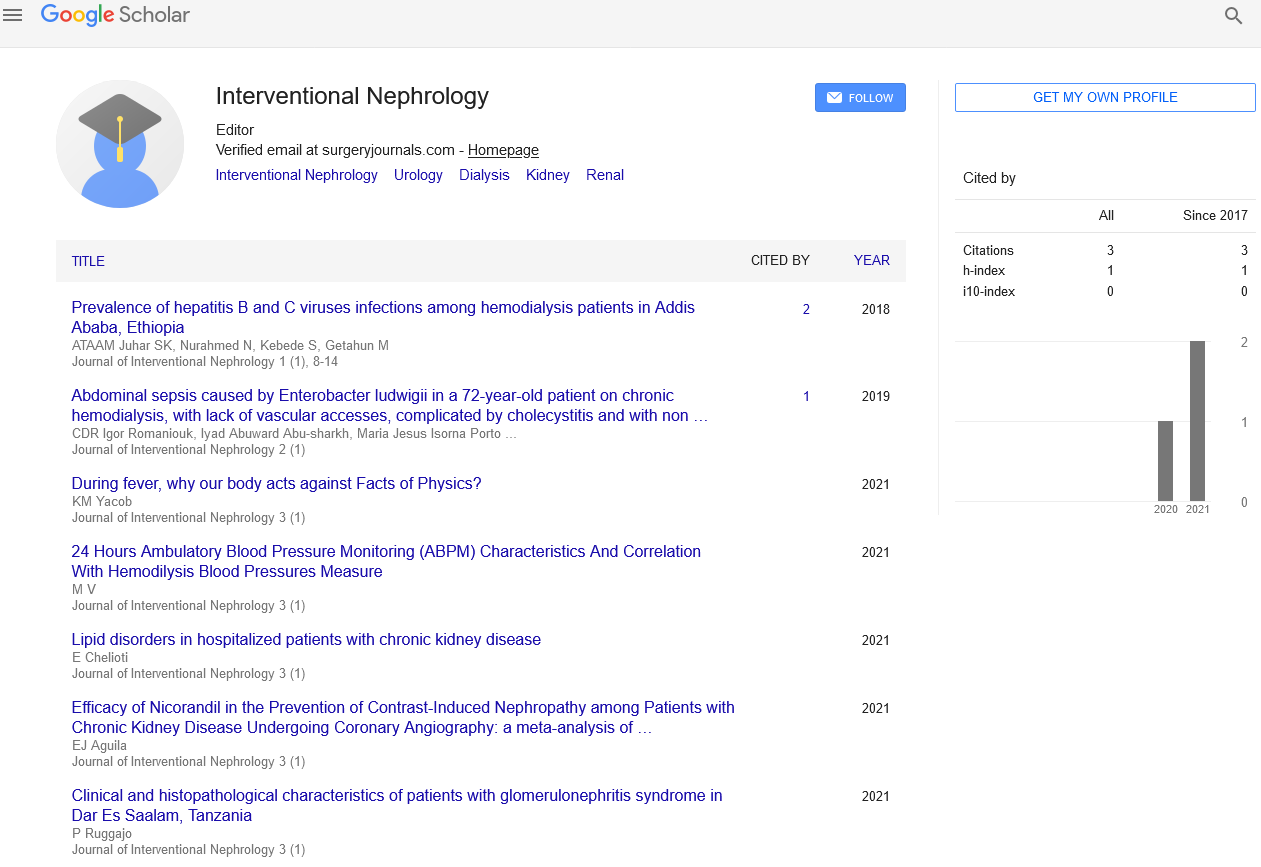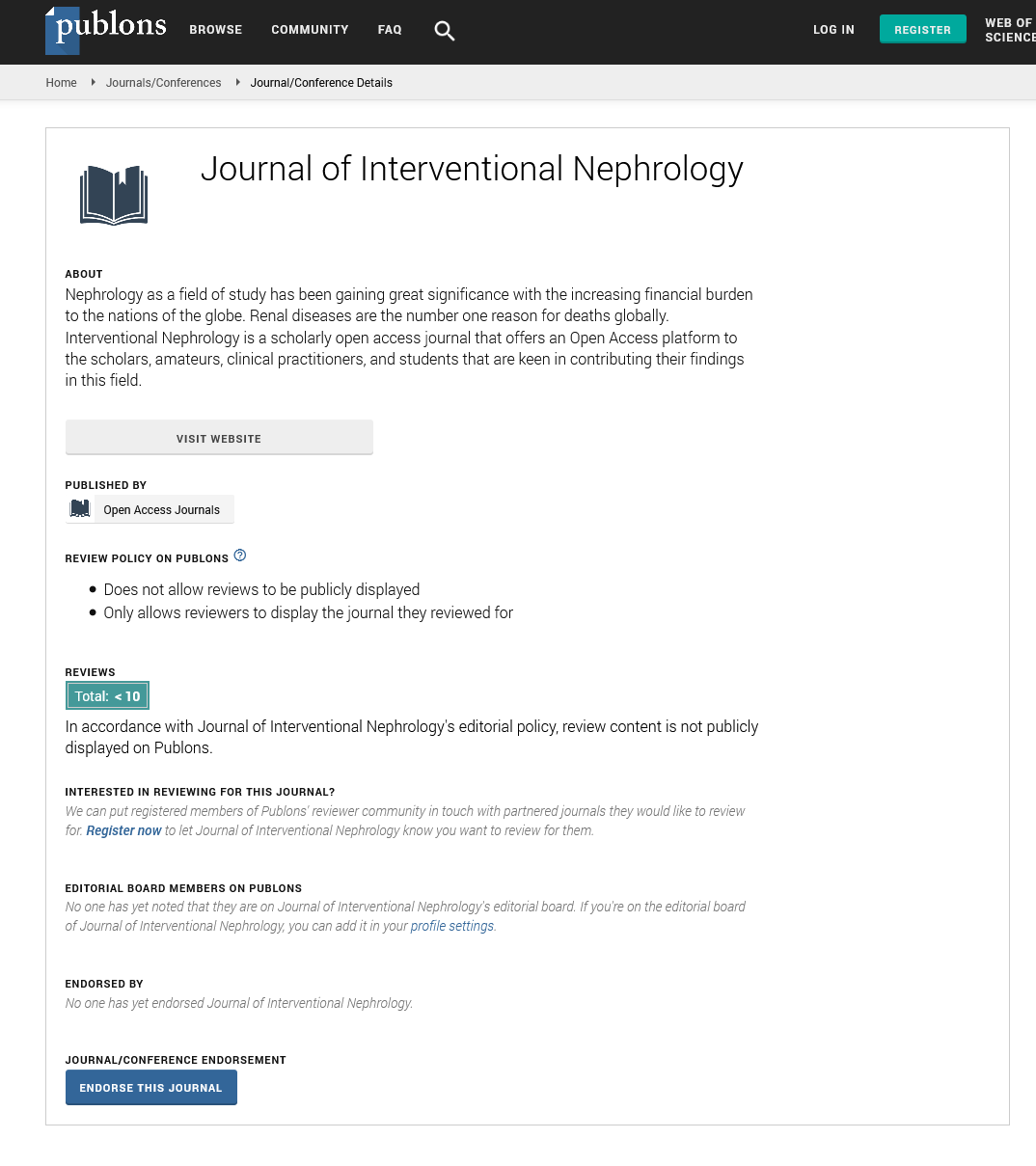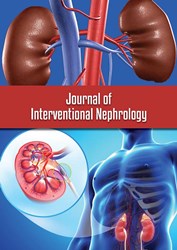Perspective - Journal of Interventional Nephrology (2024) Volume 7, Issue 2
Deciphering Renal Tubular Acidosis: Unveiling Causes, Symptoms, Diagnosis, and Treatment
- Corresponding Author:
- Zoraida Cancho
Department of Nephrology,
Auburn University,
Netherlands
E-mail: Zoraidac785558@gmail.com
Received: 21-Mar-2024, Manuscript No. OAIN-24-130218; Editor assigned: 22-Mar-2024, PreQC No. OAIN-24-130218 (PQ); Reviewed: 05-Apr-2024, QC No. OAIN-24- 130218; Revised: 12-Apr-2024, Manuscript No. OAIN-24-130218 (R); Published: 22-Apr-2024, DOI: 10.47532/oain.2024.7(2).250-251
Abstract
Renal Tubular Acidosis (RTA) stands as a complex disorder characterized by the impaired excretion of hydrogen ions by the renal tubules, leading to metabolic acidosis and electrolyte disturbances. This article aims to delve into the intricate details of RTA, exploring its underlying mechanisms, clinical presentations, diagnostic methodologies, and therapeutic interventions to provide a comprehensive understanding of this renal disorder.
Keywords
Renal tubular acidosis ● Fatigue ● Polyuria ● Polydipsia ● Osteomalacia ● Hypocalcemia
Introduction
Understanding thrombotic microangiopathy
Renal tubular acidosis refers to a group of kidney disorders marked by the inability of the renal tubules to effectively acidify the urine, resulting in systemic acidosis. The condition arises due to defects in tubular transport mechanisms responsible for bicarbonate reabsorption and hydrogen ion secretion. As a consequence, there is a failure to maintain normal blood pH, leading to metabolic acidosis.
Types of renal tubular acidosis
There are several subtypes of RTA, each with distinct etiologies and pathophysiological mechanisms:
Type 1 RTA (distal RTA): Characterized by impaired hydrogen ion secretion in the distal nephron, resulting in reduced urinary acidification. This leads to a failure to excrete acid, resulting in a persistently alkaline urine pH despite systemic acidosis.
Type 2 RTA (proximal RTA): Involves defective reabsorption of filtered bicarbonate in the proximal tubules, leading to bicarbonate wasting and subsequent metabolic acidosis. Urinary pH is typically acidic due to compensatory mechanisms in the distal nephron.
Type 4 RTA (hyperkalemic RTA): Associated with impaired potassium secretion in the distal nephron, resulting in hyperkalemia and metabolic acidosis. This type of RTA is often secondary to hypoaldosteronism or aldosterone resistance.
Description
Clinical manifestations
The clinical presentation of RTA can vary depending on the underlying subtype, severity of acidosis, and associated electrolyte abnormalities. Common signs and symptoms may include:
• Fatigue, weakness, or lethargy due to
metabolic acidosis.
• Polyuria, polydipsia, and dehydration
resulting from impaired urinary
concentration.
• Skeletal abnormalities, such as rickets or
osteomalacia in children with proximal
RTA.
• Electrolyte imbalances, including
hypokalemia, hyperkalemia, or
hypocalcemia.
• Nephrolithiasis or nephrocalcinosis due to urinary calcium precipitation in distal RTA.
Diagnostic evaluation
Diagnosing RTA necessitates a comprehensive evaluation, incorporating clinical assessment, laboratory testing, and urinary studies to delineate the underlying type and etiology. Key diagnostic modalities may include:
• Arterial blood gas analysis to assess for
metabolic acidosis and determine the
severity of respiratory compensation.
• Serum electrolyte measurements, including
potassium, chloride, and bicarbonate
levels, to evaluate for associated electrolyte
disturbances.
• Urinalysis and urinary pH measurements
to assess urinary acidification and identify
abnormalities in urinary electrolyte
excretion.
• Acid loading tests, such as the ammonium
chloride or bicarbonate challenge, to
differentiate between various subtypes of
RTA.
• Imaging studies, such as renal ultrasound
or CT scan, to assess for structural
abnormalities or nephrocalcinosis.
Management and treatment strategies
The management of RTA aims to correct acidbase disturbances, restore electrolyte balance, and address underlying etiological factors. Treatment strategies may include:
• Oral alkali therapy with sodium bicarbonate
or citrate preparations to correct metabolic
acidosis and replenish bicarbonate stores.
• Potassium supplementation or restriction to
manage associated electrolyte imbalances,
such as hypokalemia or hyperkalemia.
• Diuretics (e.g., thiazides, loop diuretics) to
enhance urinary bicarbonate excretion and
mitigate metabolic acidosis in proximal
RTA.
• Pharmacological interventions, such as
angiotensin-converting enzyme inhibitors
or potassium-sparing diuretics, to manage
hyperkalemia and hypertension in type 4
RTA.
• Treatment of underlying conditions
contributing to RTA, such as autoimmune
diseases, medications, or electrolyte
abnormalities.
Prognosis and complications
The prognosis of RTA depends on several factors, including the underlying subtype, severity of acidosis, and response to treatment. While many cases of RTA respond well to therapy and supportive care, severe or untreated forms can lead to significant morbidity, renal impairment, or electrolyte imbalances.
Conclusion
Renal tubular acidosis represents a heterogeneous group of kidney disorders characterized by impaired acid-base homeostasis and electrolyte abnormalities. Through a multidisciplinary approach encompassing early diagnosis, targeted therapy, and close monitoring, clinicians can effectively manage RTA and optimize outcomes for affected individuals, striving to alleviate symptoms, prevent complications, and improve quality of life.


